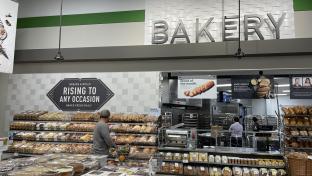Consumers Still Prefer In-Store Shopping
While the COVID-19 pandemic has skyrocketed the growth of online shopping, there is still a large segment of the population that wants to venture away from their computer screens and have in-store experiences. According to Raydiant’s second annual State of Consumer Behavior Report, 46% of respondents said that given the choice, they prefer to shop in person rather than online.
The digital signage and in-location experience management platform provider surveyed 1,000 U.S. consumers on Dec. 8, 2020, with a goal of better understanding the evolving habits, preferences and behaviors of consumers shopping both online and offline.
"The findings confirm our belief that despite all the change that came in 2020, many consumers still prefer shopping in person,” said Bobby Marhamat, CEO of San Francisco-based Raydiant. The brands who survive and thrive in the years ahead will be those who focus on serving these consumers and use in-location experiences as a competitive advantage."
Key findings of the State of Consumer Behavior 2021 report include:
- 33% of respondents prefer shopping at physical stores because they like to view, touch and interact with physical products, while 26% enjoy the overall shopping experience that a physical location provides and 13% like the immediacy that in-store shopping provides — as opposed to waiting for delivery.
- 29.8% of respondents said in-location customer service has gotten better in the past year, while 17.4% said customer service has gotten worse. A memorable interaction with one or more employees could be enough to coax a customer back, while a poor interaction could drive them into the arms of (possibly digital) competitors.
- 48% of respondents said they have replaced products they typically purchase at physical stores with competitors' online alternatives. Twenty-five percent said that they switch brands more often today than ever before.
With brand loyalty lacking, Raydiant indicates that brick-and-mortar retailers should do more to build an emotional connection with customers and provide them an experience and value that they cannot find elsewhere.
In fact, 90% of respondents said that they would be more likely to return if they have a positive in-location experience. Not only will customers return more frequently when they have a positive in-location experience, they’ll spend more per visit. Over 60% of respondents said that they’d shell out more at a store that provides a positive experience than one that does not.
According to a recent CBRE report, retail stores could increasingly take on such functions as high-tech fitting rooms, hospitality lounges, on-site processing of merchandise returns and the shipment of online orders. The commercial real estate and services firm indicated that the pandemic has fueled a new sense of urgency for retailers to design stores of the future that support shopping in-person, online or by mobile device.
When designing an in-location experience, brick-and-mortar retailers need to keep consumer’s shopping concerns in mind. For example, retailers can combine employees with tools like digital signage to direct customers to products and communicate safety protocols and use kiosks for self-checkout to improve the point-of-sale experience.
Food retailers like Publix Super Markets are still betting that gleaming big grocery stores focused on stellar customer service will prove successful. That's why the company recently opened a new store prototype in Tampa, Florida, featuring 48,000 square feet of fresh and dry grocery, a deli island on the sales floor and a Publix Aprons Cooking School kiosk in the center store.
Lets not forget, many Americans have spent the majority of 2020 in quarantine, so the opportunity to go to a physical store this year with soon-to-be readily available vaccines can offer a form of community and connection for those fighting off feelings of isolation. This opportunity for interaction and meaningful experiences may help physical storefronts attract more shoppers in 2021.
However, Raydiant warns those who manage in-location experiences to not bank on a COVID-19 vaccine immediately shifting consumer sentiment to in-store shopping. Half of respondents to its survey said that they would visit physical locations more often post-vaccine, but 27.9% of respondents would not, while 22.1% of respondents are uncertain.
Raydiant helps organizations create memorable in-location experiences by transforming their TVs into interactive digital signage that drive messaging, sales and engagement. Founded in April 2017 and formerly known as Mira, Raydiant is backed by technology investors, including Bloomberg, Inc., Transmedia Capital, 8VC, Atomic Ventures and Ron Conway.





